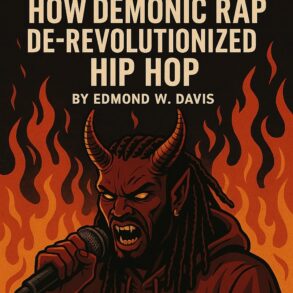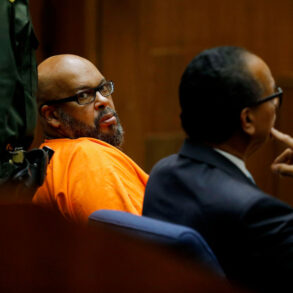Although they might seem like disparate genres today, K-pop and hip-hop go way back. Their link can be traced to a single nightclub in Korea: Moon Night.
Located in Seoul’s Itaewon neighborhood, Moon Night wasn’t particularly remarkable among the many other bars catering to tourists and American servicemen at the nearby military base. However, in the late ’80s and early ’90s, the club was ground zero for the genesis of the nation’s first K-pop group and the founding of the country’s “Big 3” music entertainment labels.
Moon Night is so crucial to the development of K-pop as we know it today because the club played music beloved by its target clientele: Americans. And in the midst of hip-hop’s golden age, hip Korean audiences got hooked.
Over decades, that connection to hip-hop has developed and evolved to create the juggernaut that is contemporary K-pop. Today, the influence of hip-hop can be seen in K-pop dance, dress and even instrumentation.
Pioneering K-Pop On The Dancefloor
Where nightlife in Korea was long separated by nationality — Korean citizens had their own establishments, as did U.S. military personnel — a new kind of integrated club scene blossomed in the 1990s. For the first time, Koreans could legally patronize the same bars as American G.I.s.
Around 1 a.m., clubs like Moon Night would transition from a “normal Korean club” to a foreigner haven, recalls Dr. Michael Hurt, an Assistant Professor at the University of Suwon’s International College.
That Moon Night became the Ur of K-pop as we know it was chiefly because Black American soldiers patronized the club, which played hip-hop. As Koreans and Black soldiers socialized, a new culture of hip-hop dance, or “rap dance,” and music grew. Dr. Hurt experienced the eagerness with which young Koreans learned hip-hop moves while visiting Moon Night in the ’90s.
Dr. Hurt — who is Black and Korean and has been living in country for various periods since the mid-’90s — recalls clubgoers asking to dance with him. They would follow along with every step. While hip-hop music was important to the progenitors of K-pop, Koreans at the time were most fascinated by dance moves, and the emphasis on dance remains an important aspect of K-pop today.
By the early ’90s, hip-hop had begun to egress its original audience and evolve into a new form. The cross-cultural connection happening at Moon Night was replicated across Seoul; Dr. Hurt notes that Koreans and Black Americans also found common musical interest at Blue Monkey in Sincheon and Golden Helmet in Hongdae.
Future K-pop heavy hitters like Yang Hyun-suk of YG Entertainment, Park Jin-young of JYP Entertainment, and Lee Soo-man of SM Entertainment were rumored to have patronized Moon Night. However, Dr. Hurt theorizes that if they were in the club scene they also visited other places too.
K-Pop’s First Generation Of Stars: Born At Moon Night, Shared Online
While hip-hop was largely inaccessible to Koreans in the 1990s, there were always dedicated Korean listeners. This young, niche community consisted of members like Seo Taiji, who brought rap dance to the public and became K-pop’s first stars.
Seo Taiji and Boys reportedly learned how to dance from Black American soldiers at Moon Night. (Yang Hyun-suk, who later on became the founder of YGE, and Lee Juno were the “and Boys” component of the trio.) Their example laid the groundwork for the second generation of K-pop stars.
“[Seo Taiji and Boys] were like gods on earth,” recalls Dr. Hurt.
The members became the undisputed purveyors of hip-hop in Korea, utilizing American hip-hop, metal and punk to create a unique musical fusion. The practice of mixing and melding genres is the standard in K-pop to this day.
Seo Taiji and Boys’ 1992 performance of “난 알아요 (I Know)” on a competitive TV show struck a chord with the nation’s youth, effectively introducing hip-hop to the general public. The performance also filled a capacious hole left in the Korean music industry after the roll back of Emergency Measure No. 9 (which only allowed patriotic or “healthy” songs to be broadcast), which banned hundreds of songs from the likes of Bob Dylan, Johnny Cash and Eric Clapton. Therein, Seo and company brought a new sound to the previously restricted airwaves.
Still, a lesser-known idol predates Seo Taiji and Boys’ rise by a couple of years. Once again, Moon Night remains in the backdrop.
If Seo Taiji and Boys is K-pop’s first idol group then Hyun Jin-Young is K-pop’s first solo artist. Though his career was brief, Hyun Jin-Young “is generally credited with bringing hip-hop to the mainstream in Korea,” says Dr. Crystal Anderson, Associate Director of Engaged Learning and African and African American Studies at George Mason University. On hits like, “슬픈 마네킹 (Sad Mannequin),” Jin-young sang, rapped, and performed dance moves, such as the Roger Rabbit, over a hip-hop beat. “Without him, you wouldn’t have [K-pop] idols, but at the same time, Seo Taiji showed that it could be lucrative and popular.”
Artists like Hyun Jin-Young, Seo Taiji, and, later, H.O.T were at the forefront of Korea’s “rap dance” scene in the mid-to-late ’90s. At the turn of the century, hip-hop culture began to circulate even further via the internet.
“The young hip-hop community [in Korea] has always been pretty hardcore because they had to be to even get enough information to maintain community,” Dr. Hurt notes. “[Things] like what are the new fashions, you had to be deep into it.”
Youth were largely responsible for disseminating the burgeoning sound of K-pop. “Music is not becoming popular at church. It starts from some kid pirating a CD,” says Kirsten Keels, a 2021 Fulbright Korea scholar.
Online, Koreans could explore hip-hop even further. In BTS’ book, Beyond The Story, RM recounted learning about hip-hop through interviews and documentaries about rappers posted on YouTube as a teen. His interest in hip-hop would later cause a ripple effect that would lead him to his current position in BTS.
“Legitimizing” Hip-Hop In K-Pop’s Second Generation
By the second generation of K-pop, which roughly begins in 2003, the days of “rap dance” had fizzled out in favor of a distinct K-pop sound. However, hip-hop’s presence in the genre remains in the form of creating a designated rapper in each idol group.
Korean Americans also played a significant role in the “legitimization” of hip-hop and K-pop. “In the early days of K-pop, particularly with the idol groups, you would have one or more members who were Korean American. The idea was they were closer to the source material and therefore it was more authentic,” says Dr. Anderson.
This rings true for K-pop groups like H.O.T — Lee Soo-man of SM Entertainment’s first massively successful group — and 1TYM, which had Korean American members. Both groups have been cited as inspiration for groups like BTS and 2PM. H.O.T’s successful formula became the blueprint for many K-pop groups. They industrialized the K-pop system, much as Motown developed its artists and hit-making processes.
Hip-Hop Artists And K-Pop Idols: Past And Present
Decades after its inception, K-pop and hip-hop acts continue to work together. In 2004, Snoop Dogg and Warren G hopped on Jinusean’s track, “2 All My People.” The song’s infectiously funky beat made the two rappers’ appearance feel seamless.
In 2010, Kanye West was featured on JYJ’s “Ayy Girl” (West also appeared in the music video). And two years later, Psy, who has been a lifelong fan of M.C. Hammer, performed the rapper’s signature dance move next to him at the 2012 American Music Awards.
K-pop and hip-hop royalty came together in 2013 when BIGBANG’s G-Dragon and Missy Elliott gave a mesmerizing performance of “Niliria” on “M-countdown”, a weekly music program broadcasted by M-net. It was a legendary moment in K-pop history because it brought together two highly respected rappers from different countries.
One group in particular has a slew of hip-hop collaborations – BTS. It doesn’t come with much surprise, since the septet’s CEO has openly stated “Black music is the base” of their musical identity. BTS and its members have collaborated with the likes of Nicki Minaj, J.Cole, Wale, Desiigner, Juice WRLD, and Lil Nas X (with whom they performed at the 2020 GRAMMYs). Recently, Jungkook, the youngest member of the group, made his solo debut with the song “Seven” featuring Southern rapper, Latto. The song hit No. 1 on the Billboard Hot 100.
In 2017, Jay-Z signed former 2PM leader Jay Park (who takes his name from the multi-GRAMMY winner) to Roc Nation. The following year, Park was seen at Roc Nation’s annual brunch where he snapped pictures with the likes of Beyoncé and Big Sean. His debut EP, Ask Bout Me, featured rappers such as 2 Chainz, Rich The Kid, and Vic Mensa.
Hip-hop’s influence on K-pop runs through the genre’s past, present and future. K-pop and hip-hop artists have always had moments of mutual respect. Even at the most unsuspecting times, the two genres have always found ways to collaborate.
Understanding Appropriation
However, the earnestness with which K-pop takes inspiration from hip-hop has understandably been questioned. The topic of cultural appropriation continues to be divisive, and unanimous consensus a rarity. “One person’s appropriation isn’t necessarily another person’s appropriation,” says Dr. Anderson.
Lately, the conversation around cultural appropriation in K-pop is commonly in relation to visual signifiers. Instances where K-pop idols have been in the hot seat include but are not limited to: ATEEZ’s Hongjoong wearing cornrows in promo images, BLACKPINK’s Lisa sporting box braids on multiple occasions, and MAMAMOO’s Hwasa donning a durag. While there’s often swift backlash from fans, response from record labels is typically delayed — if they acknowledge the uproars at all.
In 2019 and 2020, respectively, former CLC member Sorn posted a picture of someone dressed in a mask that resembled a racist caricature, while Stray Kids’ Hyunjin imitated a Korean cartoon character that was reportedly based on Black racial stereotypes. The latter eventually issued an official apology, while Sorn continued to get into hot water — most recently for a photoshoot where she flaunted an afro.
These recent cases are just repeat offenses of longstanding practices. In the ’90s, JYPE Founder Park Jin-young put backup dancers in blackface and afros. The Bubble Sisters infamously wore blackface for their debut cover art and corresponding promo pictures in 2003.
BTS’ J-Hope raised eyebrows with his remake of Webstar and Young B’s 2006 track “Chicken Noodle Soup.” The 2019 track featured Becky G, while J-Hope appeared with a gelled hairstyle that resembled dreadlocks. While the look bordered on appropriation, Young B praised the song in an interview with Billboard.
“People of all cultures know the song,” Young B said.”[J-Hope and Becky G] made it even bigger for this day and age. I’m very open-minded and I feel like [the remake] is good for the culture. It was created in Harlem, and now it’s a worldwide thing.”
“There’s a legit reason for people to be angry because aspects of African American culture have been and continue to be appropriated… the problem with Black popular culture is [it’s] so damn successful,” Dr. Hurt says.”[It’s] so hyper-successful that in a way you can’t make restraining claims on it. I don’t think it’s at all realistic anymore.”
Cases of appropriation can get harder to identify when there seems to be no clear signs of foul
play. RAIN and J.Y. Park’s 2020 duet, “Switch To Me,” is redolent of Bobby Brown’s 1988 tune, “Every Little Step.” The beat, clothing, and dance moves show that Park Jin-young was inspired by Brown.
“My baseline for a negative appropriation and misappropriation is a racial performance that mocks or demeans,” Dr. Anderson adds. “We need to recognize that there’s another perspective, not necessarily to excuse some of the more egregious cases of negative appropriation,. We can’t use our American racial lens and just put it over this thing and have it make sense because there are other factors at play.”
Sometimes the boundaries are pushed too far and are met with legal contention. In 2004, first-generation K-pop group Baby V.O.X released “Xcstasy,” utilizing a freestyle Tupac made while incarcerated. The group’s label founder, Yoon Deung Ryong, vehemently denied the rumors that they illegally used the late rapper’s voice and likeness. However, reports from that time failed to corroborate their label’s defenses. In 2020, “Cupid Shuffle” singer Bryson Bernard accused and threatened to sue K-pop group Seventeen for their song “Left & Right” which sounded comparable to his 2007 hit.
Over the past three decades, hip-hop has become part of Korea’s public consciousness resulting in the K-pop we see and hear today. The spark that Black American GIs, Seo Taiji, and hip-hop-loving Korean youth lit has exploded into a billion dollar industry. Although it can come at the cost of misappropriation and well-meaning appreciation, it ultimately shows the influence of hip-hop and Black popular music around the world.
What’s Next For K-Pop? A Roundtable Unpacks The Genre’s Past, Present And Future
This post was originally published on this site be sure to check out more of their content.






